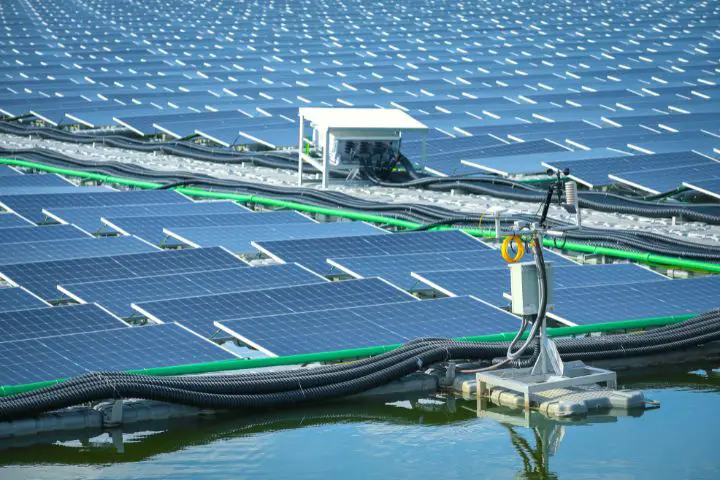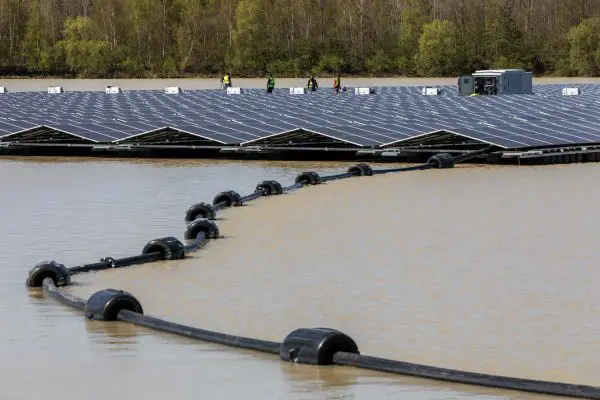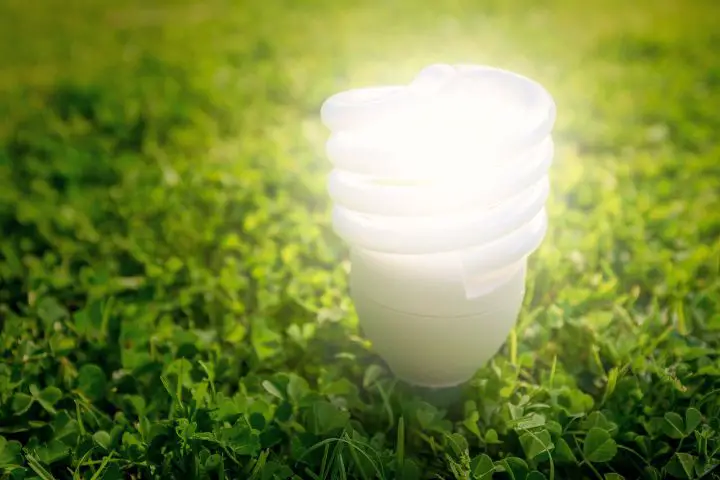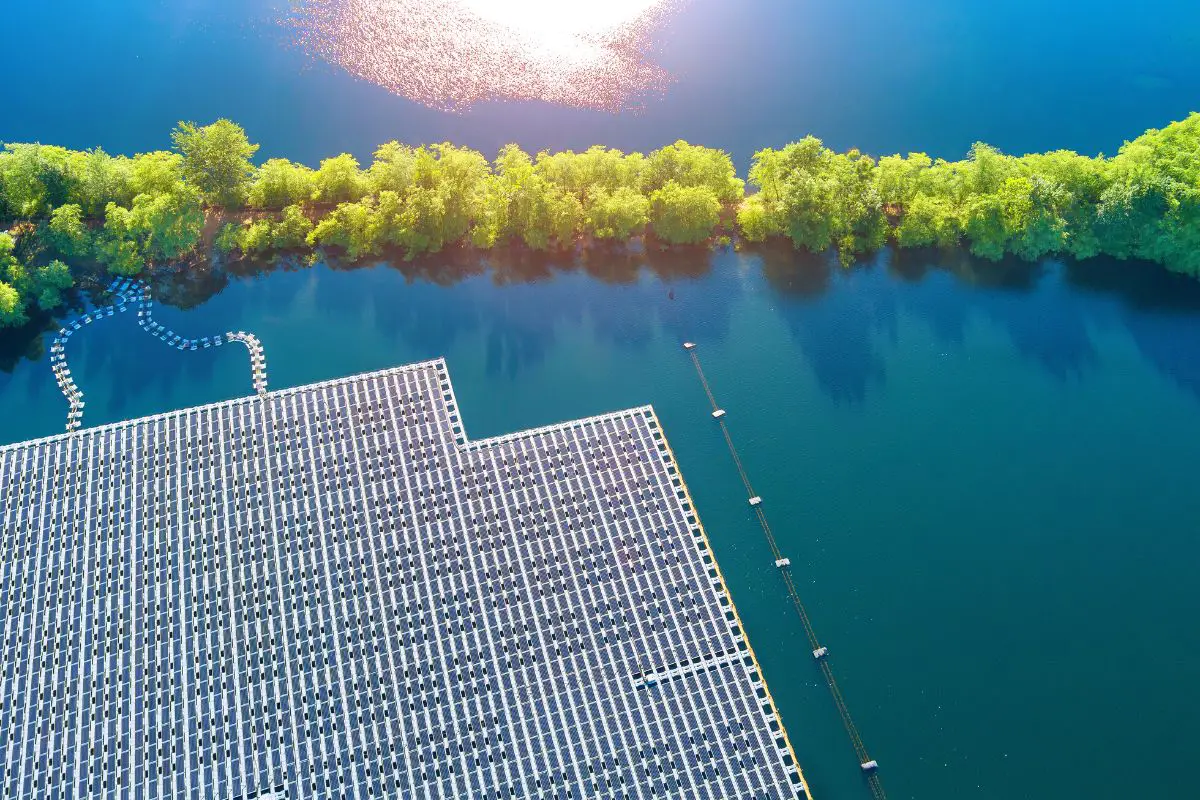The Dawn of Floatovoltaics: Full Guide to Floating Solar Power Plants
The change is inevitable.
We are moving towards a net zero emissions future to mitigate the effects of climate change. With solar energy leading the transition, the world needs vast areas covered with solar panels.
However, there are plenty of nations like Japan and South Korea where land is scarce. At the same time, nations with a high population density can’t afford to spare agricultural and industrial lands for solar panels.
For them, floating photovoltaics (FPV) or floatovoltaics technology seems like a promising solar trend. As the name indicates, the process involves floating solar panels on oceans or water reservoirs.
But how do floating solar panels work compared to regular solar farms?
In this article, we will take a closer look at floating solar power plants and compare floating solar vs ground-mounted solar. But first, let’s see how they came to be, as well as how and why someone thought of tossing arrays of solar panels onto water surfaces.
Why We Need Floating Solar Farms
To decarbonize the global electricity supply by 2050, solar energy penetrations should be between 20% to 60% across the globe. Now, the installation of utility-scale solar energy on land depends on multiple factors. The primary factor is the solar irradiance levels in specific zones.
If you consider Europe, solar irradiance and higher latitude are much lower than that of South Korea or India. So, the land use per unit of solar output will naturally have to be higher. To generate the necessary amount of solar power, 0.5 to 2.8% of the total territory in the EU should be used for solar panel installation. This can be around 1.1% in India, 3% in Japan, and as high as 5% in a country like South Korea.
With the world’s population now shooting up to over 8 billion, the pressure on arable land is ever-increasing. This is why many communities and activist groups regard conventional, ground-mounted solar farms as a direct enemy of farming – and they are not wrong.

Indeed, solar is a land-hungry power generator. One conservative estimate indicates that generating one megawatt (MW) of solar energy will require anywhere between 5 to 10 acres of land.
Another report by NREL suggests that land volume needed will depend on the solar technology used. However, the average land requirement is 3.5 acres/GWh/year in the US. In other words, powering 1,000 homes with solar electricity will require 32 acres of land.
Powering 1,000 homes with solar electricity typically requires 32 acres of land.
“Land use is becoming a big issue for renewables. People are worrying about competing uses of land, and in some markets, you might struggle to find land,” explains Lara Hayim, the head of solar research at Bloomberg New Energy Finance.
In fact, many studies have suggested combining farming and power generation, aka agrivoltaics. This will allow farmers to harvest crops and energy at the same time. However, that may not be possible in every country.
Now, you may think that the best option is using scrublands and deserts that are beyond land competition. But there’s a problem with that too.
Firstly, such areas are scarce in the EU and countries like Japan and South Korea. Some of these areas are biodiversity hotspots and environmentally protected zones. Moreover, the lack of road and water infrastructure in such remote areas makes the operation and maintenance of solar panels difficult.
Besides, the cost of transmission of power from remote locations to urban habitats is very high. In fact, it can be as high as $2.29 million/mile when the length of the overhead lines is over 10 miles.
Setting up solar panels on the water provides a great escape route to avoid land-related conflicts. The technology was pioneered in Japan and became popular across Southeast Asia in the last decade. Today, even the US has quite a few floating solar farms, the largest one being on Healdsburg’s wastewater treatment plant in California, covering 15 acres.

Not surprisingly, the world’s number one solar power contender – China – has the highest number of FPV installations. As of this writing, the world’s largest floating solar farm is the Dezhou Dingzhuang Floating Solar Farm in China. It generates 320 MW of power.
What about the potential of floating solar panels?
Here’s how it goes.
A study was conducted on 114,555 reservoirs across the world which were larger than 0.01 square kilometers in area. By covering 30% of their surface area with solar panels, the total power generation could be as high as 9,434 terawatt hours of energy per year. That is around 2,4 times the electricity consumed by the US in 2021!
Quite simply, that’s remarkable!
Or, as scientists point out: “Globally, the highest regional potential tends to be concentrated in parts of the United States, eastern Brazil, Portugal, Spain, northern South Africa, Zimbabwe, India, and eastern China.”
How Do Floating Solar Arrays Work?
An FPV system can be set up on oceans, lakes, reservoirs, or any other water body. These are a gigantic cluster of panels that float on the water’s surface like islands. The steel supports for the panels are on pontoons or rafters that are anchored to the reservoir bottom.
The material of the base needs to be light enough to float freely. In some installations, polymer floats or thin flexible membranes are used. Polyethylene floats can support as much as 2.5 times its own weight.

The materials used should be rust-resistant, humidity-resistant, and lead-free. The electrical system for power generation is similar to land-mounted panels. Between the rows of panels, there are walkways that allow the maintenance crew to move around. Modular systems that can be easily installed are becoming a popular option too.
There is one issue though.
The water level of the reservoir or lake can change during heavy rains or drought. For panels floating on the sea, strong currents, high waves, and winds are another problem. This means the panels cannot be anchored tightly to the reservoir bottom. There should be some slack in the anchor to allow the panels to move around with the current and fluctuating water levels. This makes designing the mooring system an engineering challenge.
Each of the islands is connected to a combiner box that collects the total energy yielded. This DC electricity gets transmitted to a central inverter that converts it into AC. From the inverter, a network of underwater cables connects with the inland transmission systems.
In a recent discussion with Wired, Chris Bartle, director of sales and marketing at Ciel & Terre USA, pointed out: “The electrical system is really no different than a rooftop system or a ground mount system. We’ve taken essentially old technology from the marina world—docks and buoys and whatnot—and applied that to building a structure that an array of solar panels can be mounted to.”
Now, these panels can be static, or they can have an in-built tracking technology to follow the path of the sun. In addition, some companies are using double-sided panels that can boost power generation. The combination of these two technologies can boost electricity production by 40% in some cases. However, such systems need the installation of propellers and engines to keep the floating unit stable.
Now, don’t mix up the ginormous, industrial floatovoltaics with small, commercially available contraptions that just happen to float. For example, you may have heard of floating solar pool heaters. These are a form of solar heating apparatus that uses the sun’s rays to heat up the water in the pool. Generally, they consist of a solar panel at the top, a floating element in the middle, and heat-conducting elements at the bottom. Since they do not generate power, these floating units are not FPVs.
Pros of Floating Solar Power Plants
The biggest advantage of floating solar plants is that they do not occupy valuable land areas. They can be set up on unused water bodies and do not need tree removal and forest clearing. FPVs can even be set on contaminated lakes and water bodies abandoned due to industrial activities. With the non-occupation of land, there is no conflict with agriculture, mining, or industries.
As the panels cover the water’s surface, they reduce water loss through evaporation. This helps in preserving fresh water in countries where water is scarce. An FPV with a large footprint and a peak output of 300 KW can save 12,700 cubic meters of water per year.
A team from Western University in London, Ontario, Canada has estimated that setting up foam-based solar panels on Walker Lake in Nevada can save 50 million cubic meters annually. The lake has dried up in the past years leading to the water turning salty and damaging aquatic life. FPV installation can bring the lake back to a healthy state.
The other big advantage of FPV installations is the reduction of greenhouse gas emissions related to land use change. When solar farms are set on forest and scrubland, the ground receives less sunlight. When all vegetation is removed from such lands and regrowth is prevented, carbon emissions from the land increase. FPV installations will not result in such emissions.
And guess what else? FPV systems are more efficient than land-based panels.
While solar panels need as much light as they can collect, there is a downside to it. With solar light comes solar heat, and paradoxically, heat is one of the biggest enemies of panels. The ideal panel temperature should be around 25 degrees centigrade. With every additional degree rise in temperature, the generating efficiency can drop as much as 0.5%.

Because of the cooling effect of water, the FPV units can be more efficient than terrestrial panels. The higher efficiency can be between 1.58% and 2.00% with other ambient conditions remaining the same.
Furthermore, lower ambient temperature on water reduces the chance of component damage due to heat. Since the chance of dust deposition is relatively less on water, the frequency of panel cleaning is also reduced. Perhaps unsurprisingly, the risks related to theft and vandalism are also reduced in the case of FPVs.
Interestingly, the proper use of floating solar panels can cool the water body and reduce phytoplankton biomass – that is, all the gooey life forms that can be harmful to others. This, in turn, can reduce algal biomass in the water. The blue-green algae produce toxins that can be skin and eye irritants. In the case of animals, they can cause serious illness and even death.
By combining FPV systems with hydropower infrastructures, dams will be able to meet peak-hour demands during the dry season. In fact, such a hybrid system has been implemented in Portugal’s Rabagão Dam with a 220 kW FPV installation.
Last but not least, FPVs will also lead to the decentralization of the power supply. By using wetlands and smaller water bodies scattered across a country, the process of power generation can be diversified. This will make the power infrastructure more resilient and less vulnerable to storms, hurricanes, droughts, and other natural disasters.
With all these advantages, no wonder that the market for floating solar panels is set to touch US$ 24.5 billion by 2031.
Cons of Floating Solar Panels
Even with countries like Japan and Singapore investing heavily in floating solar panels, not even 1% of the world’s solar panels are on water at the moment. Reasons? There’s more than one, of course. They are a combination of financial and technical constraints.

To start with, FPV installations require a higher initial investment. When compared to ground installations, the initial costs can be 10 to 15% higher. Additionally, the complexity of working on a floating platform also leads to higher maintenance and repair charges. In case additional power transmission infrastructure is needed, the costs are even higher.
So, manufacturers need to keep the production and operation costs on the lower side to make FPV technology a commercial success. Also, being an emerging technology, the lack of a skilled workforce can impact the installation and operation of an FPV system.
The other issue is equipment corrosion. Constant exposure to water, especially salt water, can lead to a higher rate of panel corrosion. In reality, FPV units designed for freshwater can’t be used on marine water. That means the effective life of the panels can be less than the specified period of 20-25 years.
And if you’re wondering if floating solar panels have any environmental impact, you’ve hit the nerve.
Actually, a limited amount of data is available on the long-term environmental impacts of floating solar farms. Since the boom of FPV is a recent phenomenon, not many studies have been conducted in this area. Here are some potential environmental impacts worth mentioning.
- The floating panels can reduce the amount of oxygen exchange between the water surface and the environment. This can affect water chemistry and can be harmful to the aquatic ecosystem.
- The coverage by solar panels will reduce the amount of sunlight reaching the water. On the plus side, the reduction in water temperature can reduce algal growth. However, it may alter nutrient concentrations and have a negative impact on other aquatic life.
- The installation, maintenance, and operation of solar panels can increase the risk of chemical pollution in the water body. This includes the risk of contamination from fuel or oil leakage in the water during installation or maintenance activities. The degradation of the panels and other equipment with time can also introduce toxic chemicals into the water.

The environmental impacts of FPV units can vary depending on the site characteristics and local environmental conditions. Such uncertainties make it difficult to determine the immediate environmental footprint of an FPV installation.
“We really need additional research on what some of the potential impacts are, thinking about these water ecosystems,’ says Sika Gadzanku, a policy researcher at the National Renewable Energy Laboratory.
Such uncertainties also create hurdles in obtaining approvals and permits for FPV installations for specific sites. As a result, there are regulatory challenges during the approval stage of an FPV project.
Final Thoughts
With the ballooning population, the total demand for renewable energy is expected to rise to 247 exajoules by 2050. To meet such mammoth demands, we need to speed up the process of the renewables revolution and diversify the generation of power.
Since FPV has a number of positive impacts, it can be an effective way of decarbonizing the energy sector. However, the technology is still at a nascent stage, and the environmental effects are unknown. So, energy producers may hesitate before betting on floatovoltaics.
With more research and technological developments, we can overcome the challenges and maximize our ability to harness the endless potential of solar energy. In the coming years, FPV technology can be a win-win solution if done right.






